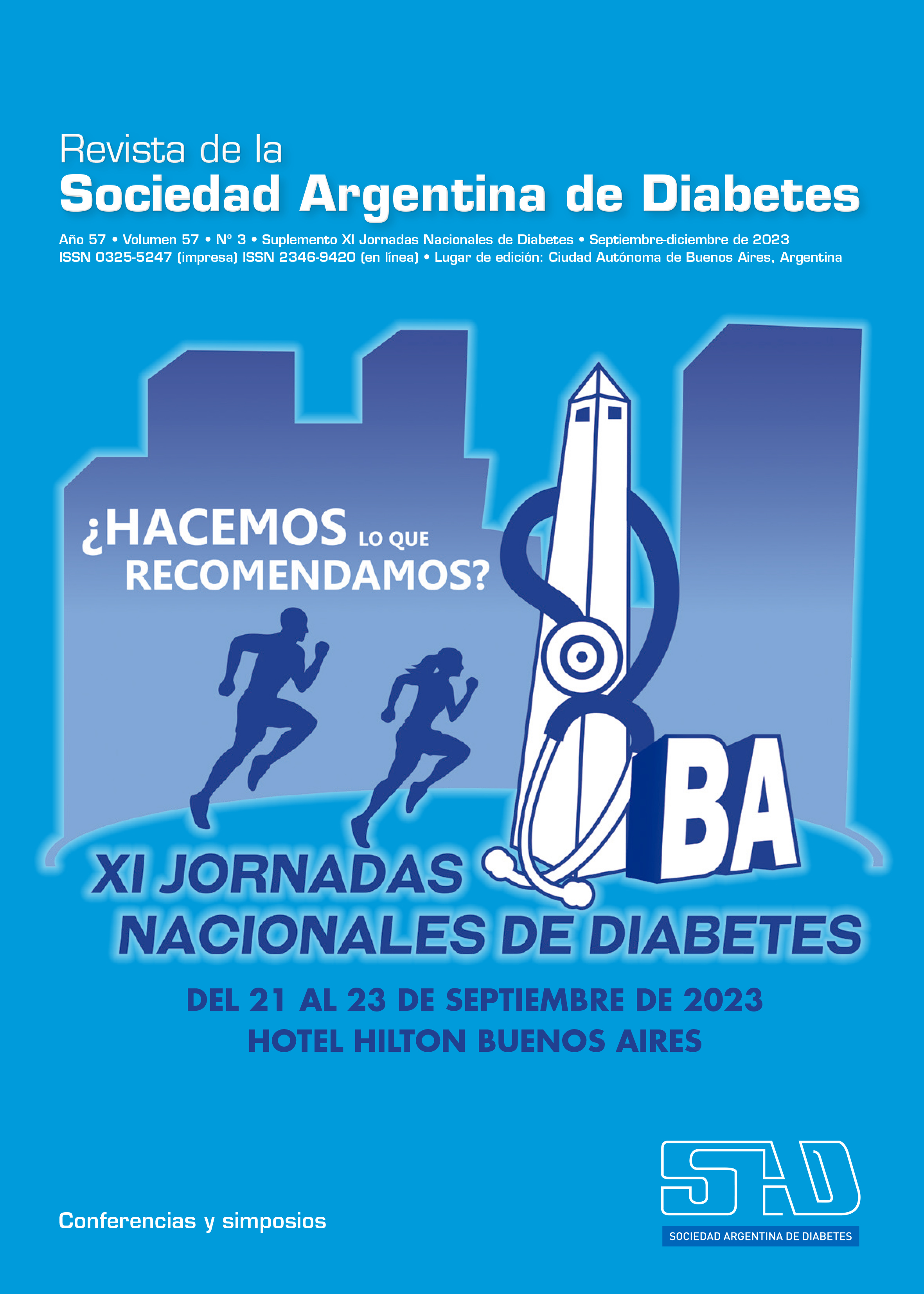Barriers in the access to medicines for the treatment of diabetes mellitus in Chile
DOI:
https://doi.org/10.47196/diab.v57i3Sup.640Keywords:
access, medicines, diabetes, chileAbstract
In Chile, 12.3% of the population suffer from diabetes mellitus (DM) and 80.9% of them is treated in the public health system (FONASA) and the others have chosen to be treated by the private system run by private health insurance companies called ISAPRES. FONASA concentrates the high risk of the population who have fewer economic resources, while the ISAPRES serve the wealthier and healthier population1,2. FONASA patients HAVE access to free prescriptions due to the public health policies such as the Explicit Health Guarantees (GES) and the Pharmacy Fund (FOFAR).
ISAPRE affiliates prefer to access medications by purchasing them at private pharmacies, with their own resources. ISAPRES have GES, but low usage is observed. This is attributed to the fact that the ISAPRE arbitrarily assigns them a doctor and to the fact that the range of prescriptions offered by the GES is assumed to be reduced and does not include the best prescriptions. This population has purchasing power, but they are affected by unregulated market prices3.
In general terms, for FONASA members there are no relevant access barriers to prescriptions offered by the GES However, access barriers have been identified for other prescriptions (not covered or not prioritized by the health system) associated with out-of-pocket spending, which is difficult to sustain over time3.
In a recent study, the following limitations were detected4:
- High dependence on imports. Lack of processes that allow the incorporation of bioequivalents.
- Outdated National Health Formulary, in force since 2006, which includes priority drugs and allows defining drugs with legal guarantee for GES and other programs.
- Lack of centralization, supervision and planning in the purchase of medicines by the State. There is no transparency in the processes that determine what will be covered.
- From the point of view of accessibility, there is a high concentration of points of sale in higher-income areas. The public and private GES have geographical and mobility difficulties. Public pharmacies have limited opening hours.
- There is a lack of policies that ensure greater transparency in the prices of medicines established by the retailer, making it difficult to compare different suppliers.
- There is a limited budget, which does not allow updating the guarantees and access to medications that promote patient adherence, avoid side effects and provide greater benefits.
References
I. Ministerio de Salud. Informe Encuesta Nacional de Salud 2016-2017. Uso de medicamentos (Internet). Santiago de Chile; 2019, 32 p. Disponible en: https://goo.gl/oe2iVt.
II. Departamento de Estadísticas e Información de Salud del Ministerio de Salud. Disponible en: https://deis.minsal.cl.
III. Castillo-Laborde C, Matute I, Aguilera X: [ed.]. Ruta del medicamento en Chile. Santiago, Chile: CEPS, Fac. de Medicina. CAS-UDD. 2022. ISBN versión Digital: 978-956-374-071-4.
IV. Castillo-Laborde C, Matute I, Sgombich X, Jofré D. Access to medicines for the treatment of chronic diseases in Chile: qualitative analysis of perceived patient barriers and facilitators in five regions of the country. doi: 10.1101/2023.01.26.23285046.
Downloads
Published
Issue
Section
License
Copyright (c) 2023 on behalf of the authors. Reproduction rights: Argentine Diabetes Society

This work is licensed under a Creative Commons Attribution-NonCommercial-NoDerivatives 4.0 International License.
Dirección Nacional de Derecho de Autor, Exp. N° 5.333.129. Instituto Nacional de la Propiedad Industrial, Marca «Revista de la Sociedad Argentina de Diabetes - Asociación Civil» N° de concesión 2.605.405 y N° de disposición 1.404/13.
La Revista de la SAD está licenciada bajo Licencia Creative Commons Atribución – No Comercial – Sin Obra Derivada 4.0 Internacional.
Por otra parte, la Revista SAD permite que los autores mantengan los derechos de autor sin restricciones.



















